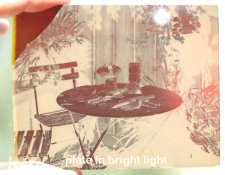Ray Rogers
Member
Ray, I remember the video you recorded when we went to see the Lippmann collection at the Musée de l'Elysée (http://www.elysee.ch/index.php?id=144&L=1) in Lausanne, Switzerland. As you know they have the world's largest collection of Lippmann photographs, I believe some 120 plates by Gabriel Lippmann. Have you been able to digitize that video in the meantime?
Given the rarity of original Lippmann photographs, your video might be a pretty interesting and unique document - even if the viewing conditions at the museum were far from ideal (fluorescent tubes!!!).
Hi Martin!
Yes, Thank you for reminding me.
You may recall I had a computer virus and had to reinstall everything; some necessary software still needs to be reinstalled...
But perhaps you are right.
You probably know there is/was a book due out (late last year perhaps?) that was to have some images as well as perhaps Lippmann's biography... Nevertheless, if you think it might be worthwhile, I will reinstall the software and finish it up. (I really need to anyway from an archival point of view. Hardware and software changes and other problems like that.)
What format do you think would be the best way to store and present the material?






 I'm due to get some experiments going soon and I've been in contact with Darran Green, one of the Lippmann gurus out there. He suggested a slightly modified GP2 hologram developer to use. I think that is what I will go with, as the Lumiere pyrogallol has some deficiencies, apparently.
I'm due to get some experiments going soon and I've been in contact with Darran Green, one of the Lippmann gurus out there. He suggested a slightly modified GP2 hologram developer to use. I think that is what I will go with, as the Lumiere pyrogallol has some deficiencies, apparently.
 And all that from a "black & white" plate; this is exciting.
And all that from a "black & white" plate; this is exciting.